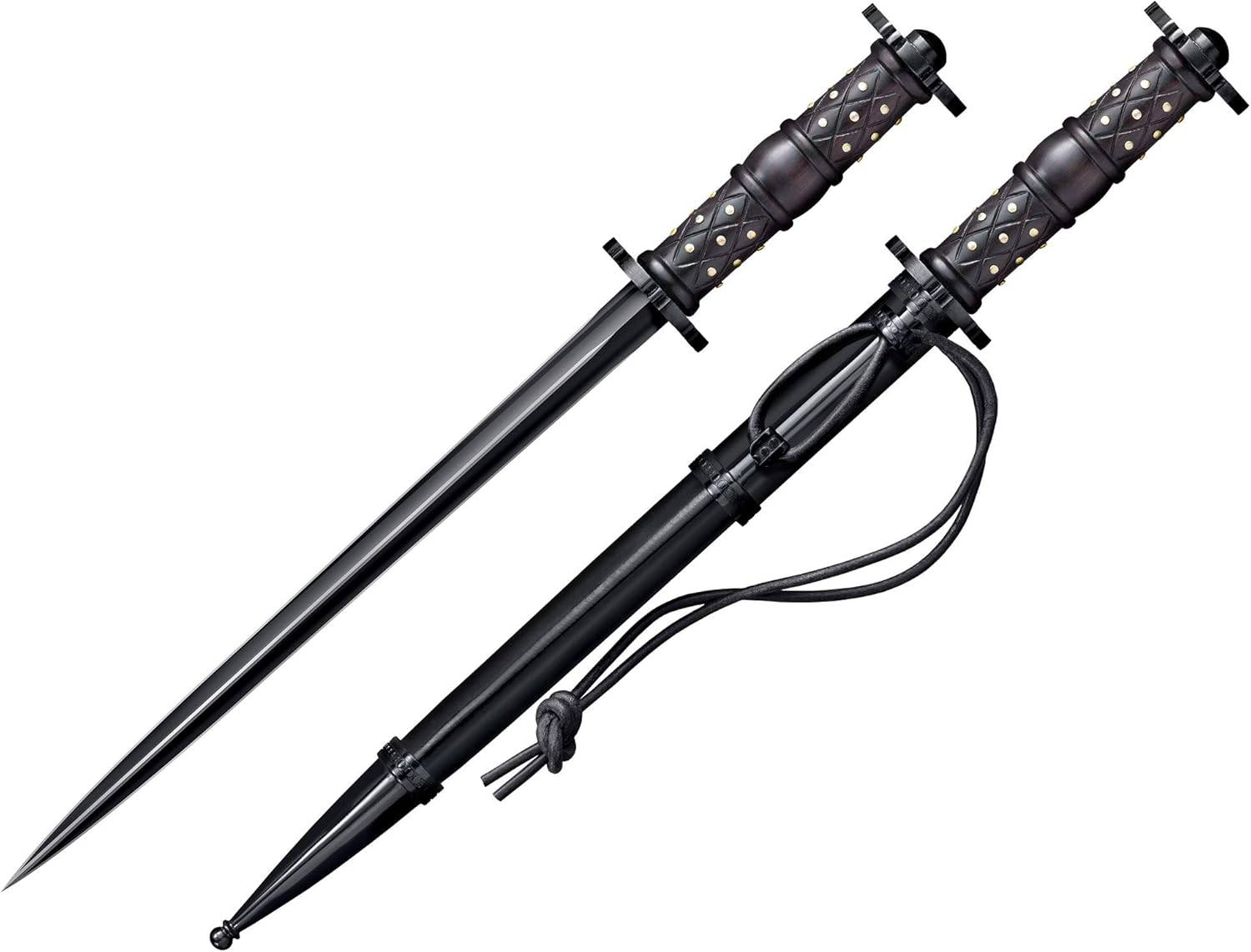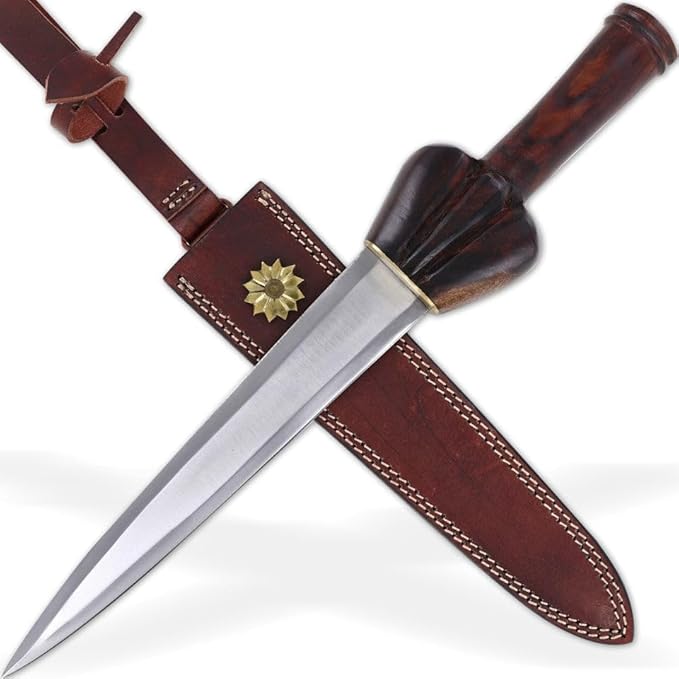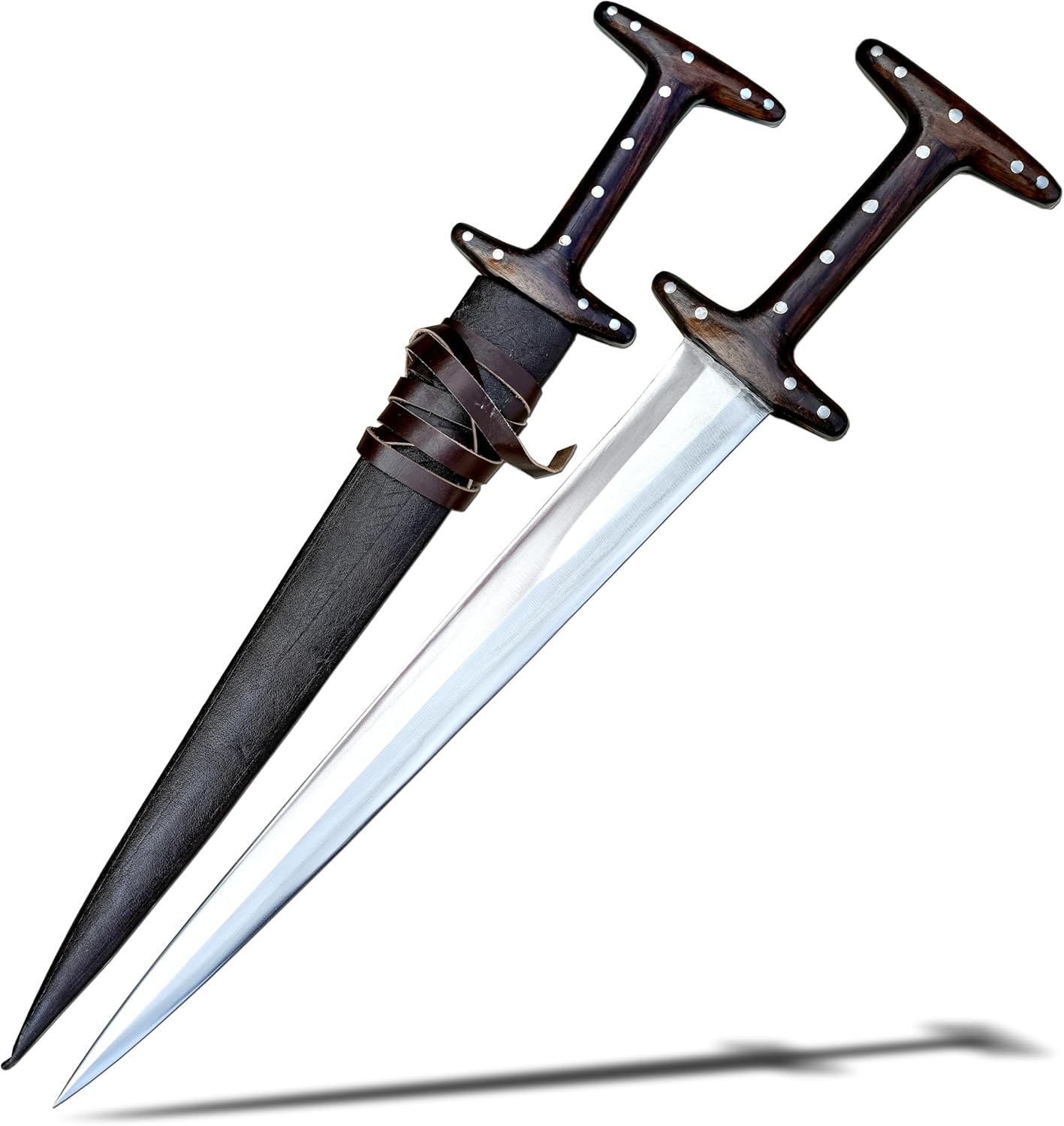~ Medieval Dagger ~
Daggers
These are a broad category, but important as side-arms / secondary weapons.
What it is:
-
Small blades, often double-edged (but not always), primarily for stabbing but sometimes also cutting to a lesser extent. Lengths vary, often ~25-50 cm depending on type.
-
Many specialised forms: Rondel dagger, Bollock dagger, Baselard, Misericorde, Cinquedea, etc.
Design & evolution:
-
Blade: often stiff, narrow, with strong point for piercing armour or finding gaps. Sometimes dagger blades have no cutting edges (or only minimal) to facilitate thrust.
-
Guards / pommels vary: some with rondel (round guard), some with distinct shaped guards (like the Bollock or Baselard), many without large guards because dagger carries less risk to hand from opponent’s weapons (but that depends).
Usage:
-
Always secondary: used when primary fails, during very close quarters (grapple, after losing main weapon), or for finishing off wounded foes (coup de grâce).
-
Useful where swords are too large (tight spaces, indoors), or where concealment / quick draw matters.
Specific types:
| Type | What makes it special / recognizable | Use case |
|---|---|---|
| Rondel dagger | Round (or octagonal) guard/pommel; narrow stiff blade, strong point. | Puncturing, finishing, stabbing through armour gaps. |
| Bollock dagger | Distinct double-lobed guard, robust blade. | Civilian carry, backup weapon; also defense and utility. |
| Baselard | Larger dagger/short sword hybrid, often with “I” or H shaped hilt, longer blade. | Use in cities or where a sidearm needs more reach; status symbol sometimes. |
| Misericorde | Very narrow, rigid, pointed, used for mercy strokes. | |
| Cinquedea | Wide blade near the guard (broad base), decorative; sometimes close to short-sword size. |



